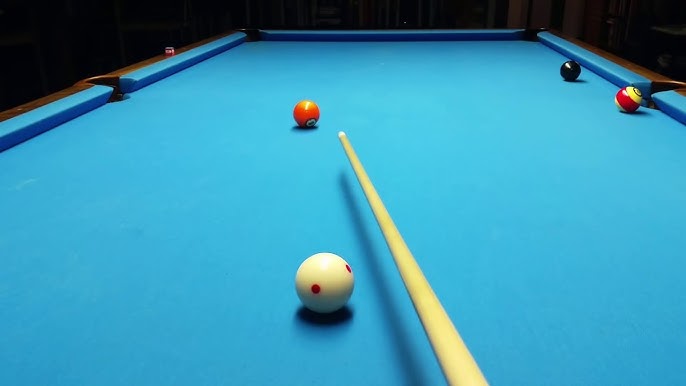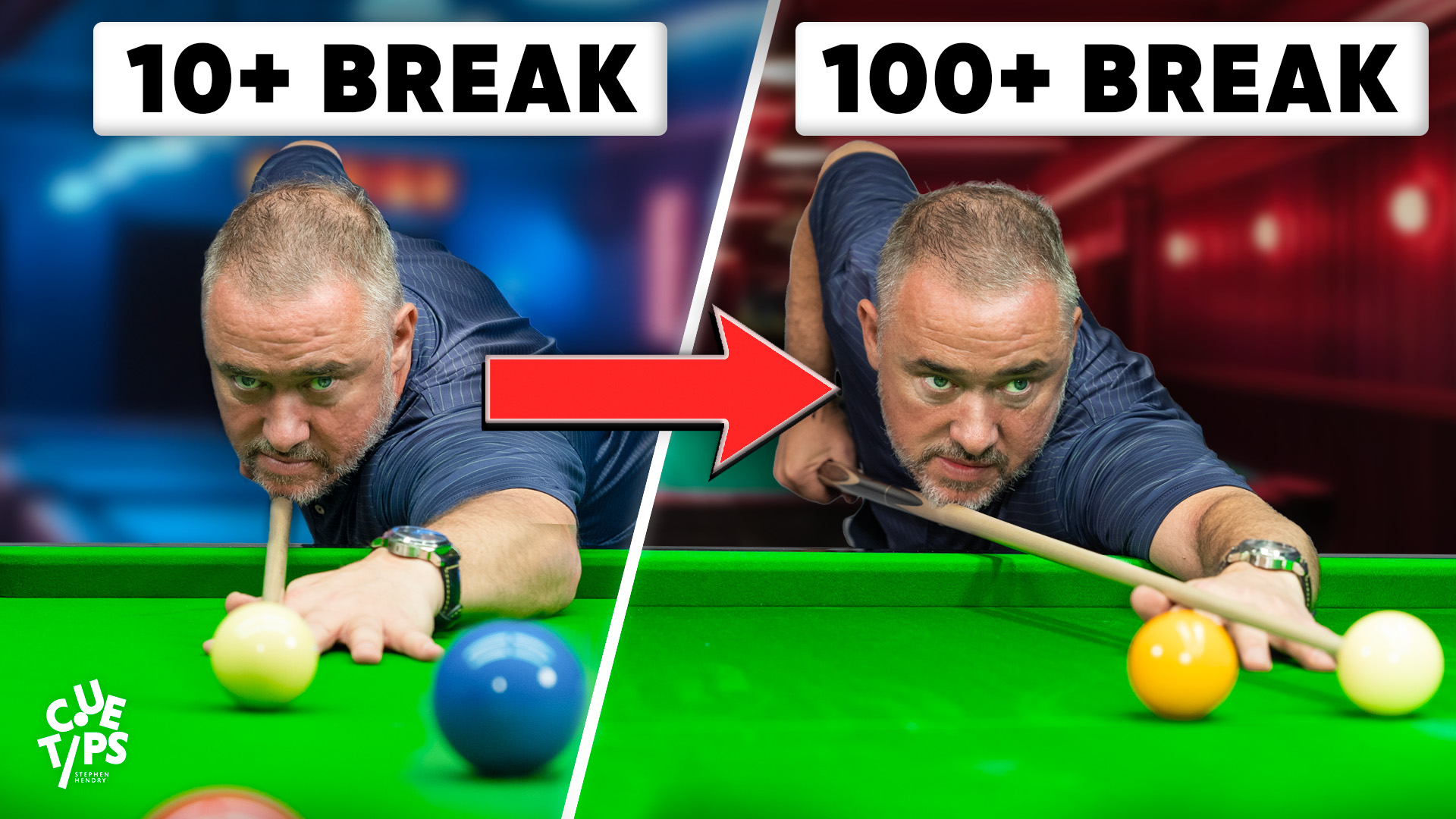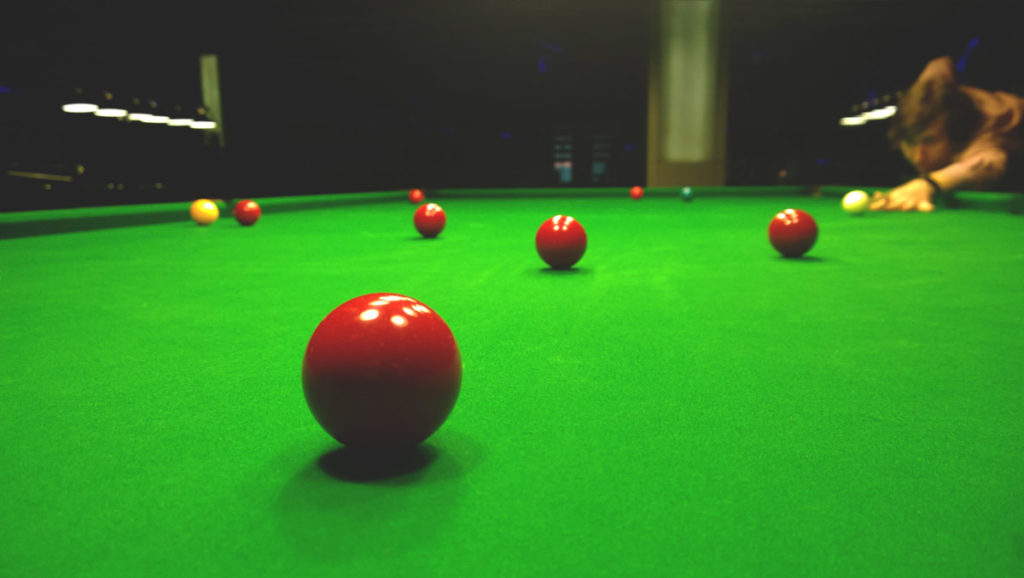Check out the video tutorial below the article!!!
Reaching your first 100+ break in snooker is one of the most satisfying milestones in the sport. It separates casual players from serious cueists, showing not just skill, but patience, planning, and control. While it might look effortless when the pros do it, every century break is built on solid fundamentals and smart shot decisions.
If you’re aiming to hit your first century, here are six proven steps to guide you — whether you’re playing in your local club or training to compete.

1. Master Cue Ball Control – The Foundation of Every Break
A century break isn’t about potting spectacular long balls — it’s about keeping the cue ball under control. Good position play ensures you’re never forced into a difficult shot.
Start by practicing soft stun shots and small screw-back drills. The goal is to keep the cue ball within a one-foot circle after every shot. As you improve, you’ll notice how much easier patterns become when the white stays in the center of the table.
2. Learn to Think Three Shots Ahead
Every professional player knows the secret to high breaks: pattern awareness. You should always be thinking at least three shots ahead — the ball you’re potting, the next ball, and the one after that.
This approach helps you build rhythm and eliminates surprises. When you visualize the pattern, you’ll naturally avoid dead ends and awkward positions.
If you find yourself improvising every shot, stop and reset. Great breaks happen when you’re one step ahead of the table, not reacting to it.

3. Prioritize Simple Pots Over Risky Ones
It’s tempting to attempt long or fancy shots when you’re on a roll, but consistency wins centuries. The best players choose the easiest possible pot that keeps the break alive.
Remember, the goal isn’t to impress — it’s to build momentum. When you stay in control, your confidence grows with each successful shot.
Think of it like climbing stairs: taking smaller, safer steps gets you to the top faster than one big leap.
4. Develop a Pre-Shot Routine and Stick to It
Your mental rhythm is as important as your cue action. Every top-level player — from Ronnie O’Sullivan to Judd Trump — has a pre-shot routine that centers their focus.
A good routine includes:
-
Standing behind the shot and visualizing the path
-
Taking two or three consistent warm-up strokes
-
Settling your breathing before striking the ball
Once you’ve found a rhythm that feels natural, never rush it — even if you’re halfway to your century. Maintaining composure is what turns a 60 break into a 100+.
5. Master the Art of Transitioning from Reds to Colors
The hardest part of building a big break isn’t potting balls — it’s managing the transitions between reds and colors.
After every red, plan carefully which color will bring the cue ball back into position for the next red. Ideally, use the black as your main scoring ball because it offers the highest points, but be flexible — if the black is tied up, switch to pink or blue without hesitation.
Here’s a simple pattern tip used by pros:
Always try to leave the cue ball around the center of the table after each color. It keeps your options open and reduces cue ball travel distance.
6. Build Mental Strength and Finish the Job
Many players reach 60, 70, or even 80… and then crumble under pressure. The fear of making a mistake often destroys the rhythm.
To overcome this, practice mental composure during long breaks. Remind yourself that each shot is just another ball — not the one that makes or breaks your century.
A good trick is to divide the break mentally into smaller goals. Tell yourself, “Let’s reach 40,” then “Let’s reach 70,” and so on. This keeps your focus sharp without overwhelming you.
When you’re close to 100, your adrenaline will surge — that’s natural. Breathe deeply, slow your walk, and stick to your routine. Most importantly, enjoy the moment — your first century only happens once.
Bonus Tip: Watch and Learn from the Masters
To truly understand rhythm, cue ball control, and pattern play, study professionals like John Higgins, Neil Robertson, or Ding Junhui. Watch how they rarely move the cue ball more than necessary, keeping the game simple yet precise.
You can even record your own practice sessions. Reviewing your footage helps identify flaws in position play, timing, and shot selection — the same way pros analyze their matches.

Final Thoughts
Breaking the 100 mark in snooker isn’t about luck — it’s about discipline, awareness, and repetition. The six steps above will build the habits needed to play with confidence and precision.
Whether you’re chasing your first half-century or preparing for tournament play, the key is to practice smart, not just hard. Every century starts with one well-planned shot — make it count.
Check out the video tutorial here:
Sources
-
Billiards Digest – Triangle to Triangle Drill with Darren Appleton (June 2023)


